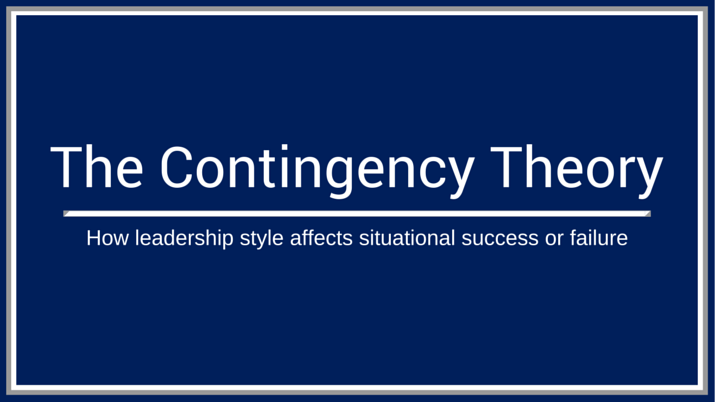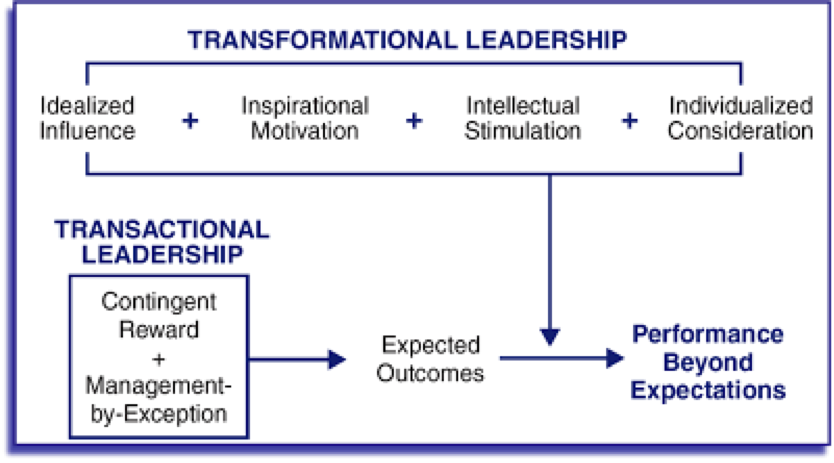
According to Sigmoid Curve leadership is a process which influences the leaders and followers for achieving organisational objectives through change. Without an effective leader, all other factors may become useless or it may lead to losses. Influencing is the heart of leadership, where a leader communicates ideas to the followers and encourages them to execute and support their ideas through change. Leadership is a mutual influence process where a leader influences his followers and followers influences their leaders. Leaders are both born and made. You truly need to have passion toward leading other people and at the same time, build the skills you need to be an effective leader. If you’re involved in the tech industry, an online master of IT program will help you get equipped with the right skill set in order for you to effectively handle a team.
Workforce always need support and guidance to motivate them and to lead them. The influencing nature of the leaders helps in changing the behavior of followers. By using various sources of power leaders can influence the followers to reach the desired goals.
Leaders are mainly responsible for the success of the firms. The way in which leaders carry out their tasks helps in determining the success or failure of the organisation. it is important for the organisations to motivate and guide the employees so that their confidence level increases and they can perform better which in turn leads to fulfilling the goals of the firm.
Qualities of a good leader are Inspiring nature, Integrity, Dedication, Honesty, Humility, Openness, Creativity, Intelligence, Forward-looking, Competence, Self-confidence, Trustworthiness, Extroversion, Assertiveness, Enthusiasm, tolerance, passion, courage etc., some are discussed below.

Self-confidence:
Self-confidence is a behavior and interpersonal skill which an individual shows in various difficult situations. A self-confident leader induces self-confidence among its group members.
Humility:
A humble leader does not have pride and arrogance. They confess their mistakes to their group members to make them loyal. It is very important for the organisations to have humble leaders.
Trustworthiness:
Trust plays a very important role in building effective relationships. If the group members do not have trust in their leaders, then it will develop a negative impression among the group members towards their leaders.
Extroversion:
This trait reflects talkativeness, assertiveness, being sociable and open to establishing new relationships. Such type of leadership trait helps the leaders to be friendly and demonstrative in various situations.
Assertiveness:
An individual’s ability to explain his demands, opinions, feelings and attitudes in a straight forward and outspoken manner is called as assertiveness. If the leader is assertive, then they can carry out a number of tasks and can accomplish organisations objectives easily.
Enthusiasm:
It is very important for a leader to be enthusiastic as it helps in developing effective relationships with their group members. Enthusiasm should be there in a leader in all the leadership situations.
Tolerance:
It is very important for a leader to tolerate frustration, as a leader meets with a number of disappointments. A high tolerance level helps a leader to achieve desired goals in a very short period of time.
Passion:
Passion refers to the individual’s obsession towards accomplishing the organisational objectives. An effective leader should also have a passion for his group members without which he cannot accomplish the task.
Courage:
It is very important for a leader to be brave and courageous so that they can face the challenges of risk-taking and being initiative. Courageous leaders can take wise decisions during market uncertainty and they can also solve internal and external problems easily.
Sense of humor:
Leaders should make effective use of humor as it helps in reducing the tension and boredom of the group members. A good humor also helps in removing the ill-feelings and conflicts in the group.
Types of leaders:
Authoritarian or autocratic leaders:
In this type leaders are the ultimate decision makers, they do not give freedom to the subordinates to take decisions. Autocratic leaders hold all responsibility and authority and make decisions on their own without consulting subordinates. These leaders communicate their decisions and expect prompt implementation.
Democratic leaders:
Democratic leadership is the most preferred style; in this leaders give complete freedom to the employees to work. They allow them to set their own standards, so it motivates the employees to reach the desired goals. Democratic leaders delegate authority also, but they hold responsible for the final results.
Transformational leaders:
Transformational leaders empower and motivate the employees. These leaders have influencing, charming, and motivating nature, which enable them to introduce changes in the organisation as well as in their followers. They urge the followers to strive for the benefits of the group, it creates knowledge, intellectual stimulation and idealised nature.
Transactional leaders:
Transactional leaders are job and reward oriented; they influence the followers by increasing salaries, positions and by giving them promotions for the achievement of desired goals of the organisation. These leaders make use of standard forms of incentives, rewards, punishments for controlling and influencing their followers.
Cross-cultural leaders:
Cross-cultural leaders influence the people without any cultural variations; they adjust in the current environment and lead the followers successfully. People of different cultures work in the same organisation and in order to lead them a leader having unique qualities are necessary.
Laissez-faire leaders:
Laissez-faire leaders allow subordinates to work as they choose. Subordinates take decisions and implement without or very less interference of the leaders. It is the least satisfying and least effective leadership styles.
Charismatic leaders:
Charismatic leadership is the influencing and motivating followers towards the objectives of the organisations. Their greater influencing nature makes the employees do work in a better way without any difficulty.
Theories of leadership:
Trait theory:
This theory states that characteristics of a person make her or him as a leader, such as ambition, energy, desire to lead, intelligence, self-confidence, job knowledge, self-actualization, initiative etc., such traits differentiate the leaders from non-leaders. Effective leadership always depends on the personality traits of the leaders.

Behavioral theory:
Many studies state that the leadership is the set of behaviors of an individual. According to this theory, the leaders motivate the employees by using positive or negative motivation tools, it means by appreciation or by scolding. Behavioral theory suggests that leaders should have a strong personality, well developed positive attitude and self-confidence. Specific behaviors and actions used by individuals differentiate leaders from non-leaders.
Contingency theory:

Some traits are common for all leaders but individuals who are leaders in a particular situation may not be the leaders of all others situations. Contingency theory states that the personality traits of leaders must match with the needs of the situations. Then only an individual can become a strong leader. According to this theory, a single optimal trait cannot make successful leaders for all situations.
Transactional Theory:
Transactional leadership theory mainly deals with the transactions which take place between leaders and followers. These leaders are job and reward oriented; they influence the followers by increasing salaries, positions and by giving them promotions for the achievement of desired goals of the organisation. Transactional leaders make use of standard forms of incentives, rewards, punishments for controlling and influencing their followers.

Transformational theory:
Transformational leaders introduce changes in the organisation as well as in their followers and urge the followers to strive for the benefits of the group. Transformation leadership introduce changes in the organisations as well as in the followers. They create learning opportunities to their followers by encouraging and motivating them to solve their problems and to reach the goals of the organisation.




